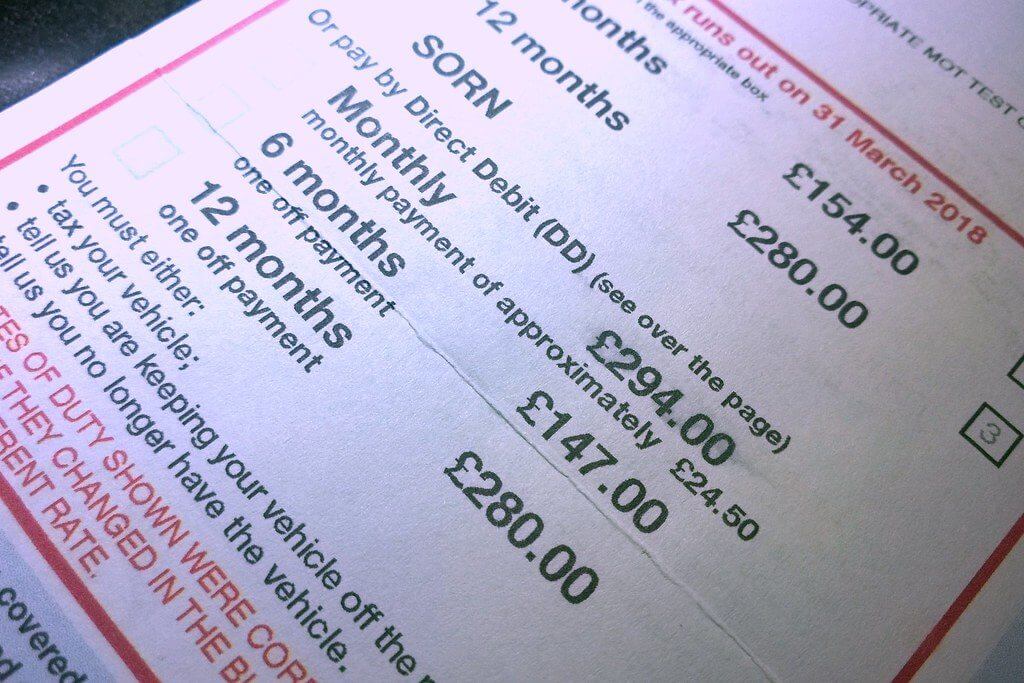Did you know that nearly 40% of drivers aren’t confident checking their tyre tread? That’s according to a recent ebay survey. National Highways research also found tyre issues have been the most common reasons for breakdowns in the months of February and March with 5,934 incidents in 2021, 7,095 in 2022 and 7,762 in 2023.
Driving with tyre treads below the legal limit can result in 3 penalty points on your licence and a £2,500 fine – per tyre.
In this post, we’ll explain how to check tyre tread depth (get your 20p ready!) and what you should watch out for when you need to change tyres…
What’s the legal minimum depth of tread for car tyres?
The legal limit for tyres is 1.6mm. This level must apply across the complete circumference of the central three quarters of each tyre. Your tyre tread will be measured during your MOT and you can find out more about this in the UK government’s MOT inspection manual.
How to measure tyre tread depth with a 20p coin
A quick way to check your car tyre tread is measure it with a 20p coin. Ideal if you don’t have access to a tread depth gauge, all you need to do is the following:
- Take out a 20p coin
- Insert the 20p into the groove of your tyre
- Check the tyre tread reaches higher than the outer border of the coin
- If it does, your tyres are above the legal limit
Tyresafe recommends doing the 20p test at least once a month and ideally every couple of weeks.
How to measure tyre tread depth with a gauge
If you have a tyre tread gauge, you can use this tool to measure the depth.
- Insert gauge into the grooves of the tread
- Push the gauge down onto the tyre
- Read the measurement
You’ll have an accurate measurement that can help inform when it’s time to change your tyres.
Tyre safety checks
With the amount of vehicles that break down due to tyre issues, it’s no surprise to see the UK government calling on drivers to check vehicles before they travel.
They highlight how driving without the right amount of tread can affect grip, braking distance and steering. Driving with under-inflated or over-inflated tyres can also affect braking distances, steering, fuel efficiency and how long they last.
To ensure your tyres are safe to drive on, follow the National Highways advice:
- Ensure tyre pressures are suitable for your load and check the condition of every tyre, including the spare
- Look out for cuts or wear across the whole of every tyre, including sidewall
- Use the 20p test to ensure the tyre has sufficient tread depth of at least 1.6mm
Tyre safety in different seasons
Every season brings its own challenges when it comes to driving. Tyres are no exception. Winter has wet and icy roads so it’s important to check the depth, condition and pressure of them, while the summer heat can cause tyres to wear out faster and hot roads can make them slippery.
According to the automotive testing and certification company MIRA, braking distances in wet weather increases by as much as 44% between a tyre at 3mm depth and one at 1.6mm.
A lower depth also increases the risk of your car aquaplaning, as water is harder to disperse between tyre and the road. According to the RAC, in the wet, each tyre can shift a gallon of water every second. A figure that provides a stark indication of just how important tyre depth is.
This shows just how important it is to maintain a tread depth at or above the legal limit of 1.6mm.
How long will a 3mm tyre tread last?
A tyre with a 3mm tread should last around 10,000 to 15,000 miles.
Although the legal minimum tyre tread measurement is 1.6mm, many city cars’ tyres have a new tread depth of 8-10mm. With this amount of depth, front tyres are designed to last around 20,000 miles. Many experts recommend changing your tyres at 3mm to keep you and other drivers safe.
Front and rear tyres may wear differently depending on driving habits, with the front more likely to wear through first. If you’re confident enough, you could rotate your tyres to extend their lives.
What are common tyre problems?
- Wear and tear
- Lack of tread
- Excessive and uneven wear
- Tracking/wheel alignment
- Puncture
- Faulty valve
- Risk of damage when driving at speed
- Misalignment
How many points for bald tyres?
You could receive 3 points and a £2,500 fine for each illegal tyre. You could therefore potentially lose your licence and have a hefty £10k fine to pay. To avoid this, make sure you check your tyre depth tread at least once a month.
Driving with bald tyres not only places you and other motorists at risk, it can also invalidate your insurance. If you’re involved in an accident and your tyres are found to be below the limit, there’s a chance that your insurer won’t pay out the damage on your vehicle.
If you’re left without a vehicle while getting new tyres, Tempcover’s comprehensive and flexible temporary car insurance can get you safely on the road.
Frequently Asked Questions
Why is tyre tread depth so important?
Having the right level of tyre tread helps your car have better grip, shorter braking distances and stay more stable in wet or icy conditions.
What tyre safety checks should I do before driving my car?
Check your tyre pressure and look for any cuts or wear on the tyres. Use the 20p check to ensure tread depth is at least 1.6mm. If it isn’t, it’s time to replace your tyres.
How does tyre tread depth affect braking distances in wet conditions?
Braking distances can increase by up to 44% in wet weather if the tread depth is reduced from 3mm to 1.6mm. This shows how important it is for the safety of both you and other road users to ensure the tread depth of your tyres is legal.
Links
https://www.tyrepress.com/2023/06/40-of-drivers-cant-check-tread-depth-ebay/
https://nationalhighways.co.uk/tyrecheck-resources/
https://motorway.co.uk/sell-my-car/guides/how-to-check-tyre-tread-depth
https://www.theaa.com/driving-advice/legal/tyres
https://nationalhighways.co.uk/road-safety/tyre-checks/
https://www.rac.co.uk/drive/advice/tyres/checking-tyre-tread/







